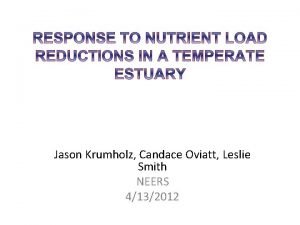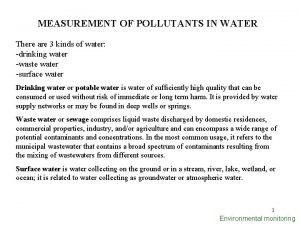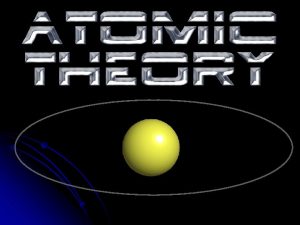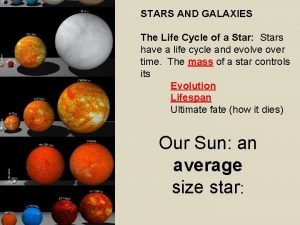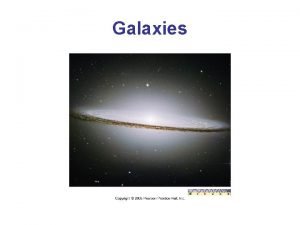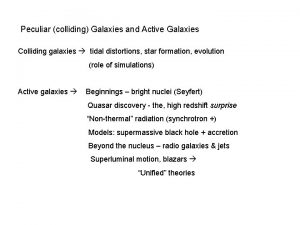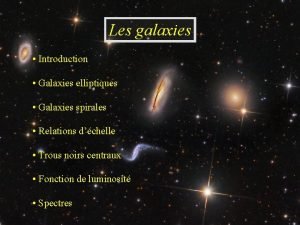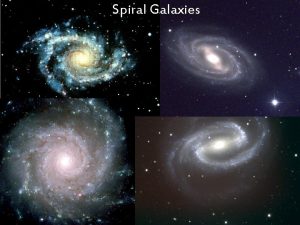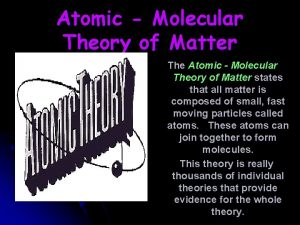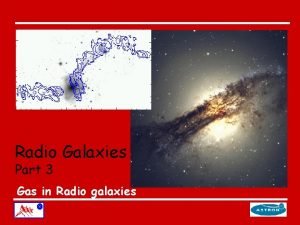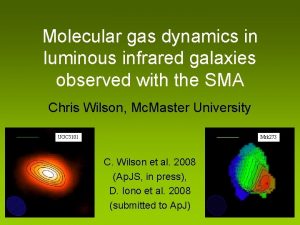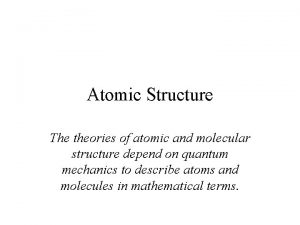Atomic and Molecular Gas in Galaxies Mark Krumholz

















- Slides: 17

Atomic and Molecular Gas in Galaxies Mark Krumholz UC Santa Cruz The EVLA: Galaxies Through Cosmic Time December 18, 2008 Collaborators: Sara Ellison (U. Victoria) Chris Matzner (U. Toronto) Chris Mc. Kee (UC Berkeley) Xavier Prochaska (UC Santa Cruz) Jonathan Tan (U. Florida) Jason Tumlinson (STSc. I)

Stars Do Not Form in Gas SINGS + GALEX + THINGS + SONG (animation borrowed from N. Gnedin)

Stars Form in Molecular Gas The SFR in a galaxy correlates with its molecular gas surface density. Atomic gas is important primarily for producing molecules. SFR vs. surface densities of HI (blue asterisks) and H 2 (black and green triangles) in M 51 a (Kennicutt et al. 2007)

Implications The relationship between HI content and star formation is not straightforward, particularly at low surface density A theory of star formation must be able to predict the atomic and molecular fractions in a galaxy’s ISM from physical principles

Anatomy of An Atomic. Molecular Complex • Molecules reside in giant molecular clouds (GMCs) that are the inner parts of atomic-molecular complexes • The outer parts are dissociated by interstellar Lyman-Werner photons • Goal: compute HI and H 2 mass fractions

Dissociation Balance in Atomic-Molecular Complexes (Krumholz, Mc. Kee, & Tumlinson 2008 a) The basic equations for this system are chemical Formation on grains = Photodissociation equilibrium and radiative transfer. Idealized problem: spherical cloud of radius R, Decrease in radiation intensity = density n, dust opacity d, H 2 formation rate Absorptions by in H 2 radiation molecules + dust grains coefficient R, immersed field with LW photon number density E 0*, find fraction of mass in HI and H 2.

Calculating Molecular Fractions To good approximation, solution only depends on two dimensionless numbers: Approximate solution: Top: analytic solution for location of HI / H 2 transition vs. exact numerical result Bottom: H 2 volume fraction vs. , R

Shielding Layers in Galaxies (Krumholz, Mc. Kee, & Tumlinson 2008 b, in press) What is ( d /R) (E 0*/ n)? Allowed n. CNM • Dust opacity d and H 2 formation rate R both Z, so d / R ~ const • CNM dominates shielding, so n is the FGH curves for MW (Wolfire et al. 2003) CNM density • CNM density set by pressure balance with WNM, and n. CNM E 0*, with weak Z dependence. ( d /R) (E 0*/ n) ~ 1 in all galaxies!

Reality Check… Compare model to BIMA SONG (Blitz & Rosolowsky 2006) and HERA / THINGS (Leroy et al. 2008) surveys, with galaxies binned by metallicity HI Matches observed saturation of HI, with higher HI at low metallicity! Matches column needed for molecules to appear, with higher at lower metallicity! H 2

Another Application: DLAs (Krumholz, Ellison, Prochaska, Mc. Kee, & Tumlinson, 2009, in preparation)

ep td = td ep = 10 0 0 10 tff 00 tf f = td 10 ep tff = 10 tf f What Does this Imply for SF? Depletion time as a function of H 2 for 2 local galaxies (left, Wong & Blitz 2002) and as a function of LHCN for a sample of local and z ~ 2 galaxies (right, Gao & Solomon 2004, Gao et al. 2007)

There is a Universal SFR Clouds convert ~1% of their mass to stars per tff, regardless of density or environment (Krumholz & Mc. Kee 2005; Tan, Krumholz, & Mc. Kee 2006; Krumholz & Tan 2007)

A Remark on GMCs • SFR is simply 0. 01 Mmol / tff-mol ! • In low galaxies, GMCs all have ~ 100 M pc– 2 (Bolatto et al. 2008) due to internal regulation (Krumholz, Matzner, & Mc. Kee 2006) • In high galaxies, GMC must be ≥ gal to maintain hydrostatic balance Luminosity ( mass) vs. radius for galactic and extragalactic GMCs (Bolatto et al. 2008)

Putting it Together: The Total Gas Star Formation Law (Krumholz, Mc. Kee, & Tumlinson, 2009, in preparation) Super-linear Linear from universal from rising HI Hdensity GMC properties 2 conversion Lines: theory Contours: THINGS, Bigiel et al. 2008 Symbols: literature data compiled by Bigiel et al. 2008

Atomic and Molecular Star Formation Laws HI H 2

A Project for the EVLA Density of star-forming DLAs (points) and Kennicutt law prediction (blue line) (Wolfe & Chen 2006) SF law in LSB galaxies (points) and Kennicutt law (line) (Wyder et al. 2009) In low metallicity, low gas, the SFR is below Kennicutt law prediction. This may be an effect of low H 2 content. The EVLA can check this directly.

Summary • Star formation is a 2 -step process: (1) convert HI in the ISM into H 2, (2) turn H 2 into stars. • Making molecules depends on gas , Z • Making stars from molecules depends on tff • Either step can be the rate-limiting one, depending on the environment • This has important implications for SF and galaxy evolution at high z, low metallicity
 Jason krumholz
Jason krumholz How is orbital hybridization useful in describing molecules
How is orbital hybridization useful in describing molecules Difference between atomic and molecular spectroscopy
Difference between atomic and molecular spectroscopy Erzeng xue
Erzeng xue Waves are produced by stars and galaxies
Waves are produced by stars and galaxies Chapter 30 galaxies and the universe
Chapter 30 galaxies and the universe Elliptical, spiral and irregular.
Elliptical, spiral and irregular. Relative atomic mass of beryllium
Relative atomic mass of beryllium Atomic weight of oxygen
Atomic weight of oxygen Whats the difference between atomic mass and atomic number
Whats the difference between atomic mass and atomic number Covalent bond melting point
Covalent bond melting point Giant molecular structure vs simple molecular structure
Giant molecular structure vs simple molecular structure Giant molecular structure vs simple molecular structure
Giant molecular structure vs simple molecular structure Atomic molecular theory
Atomic molecular theory Hydrosulfuric acid
Hydrosulfuric acid Life cycle of a galaxy
Life cycle of a galaxy Facts about elliptical galaxies
Facts about elliptical galaxies Th eirregulars
Th eirregulars
